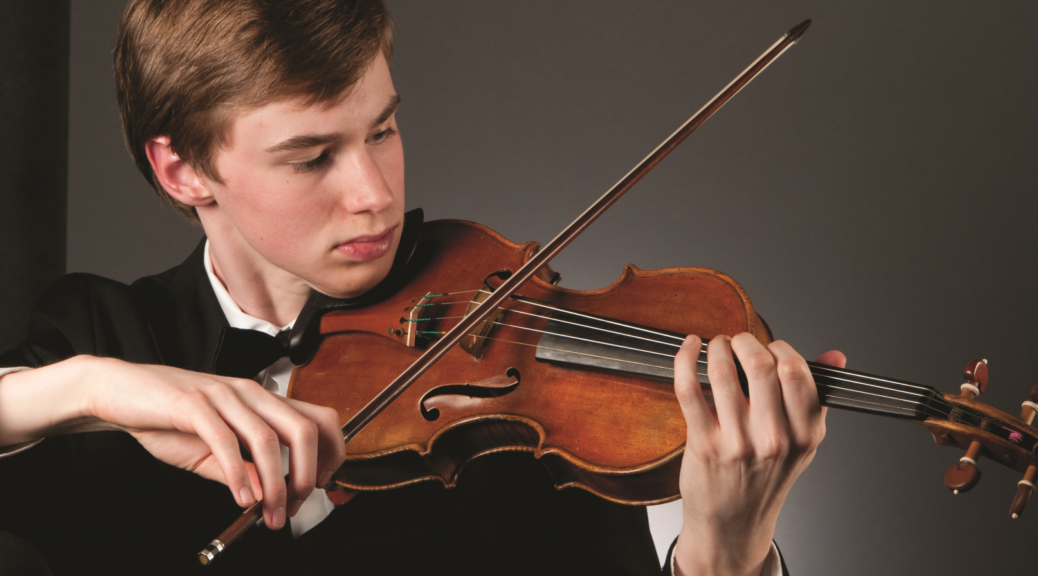
SYMPHONIC TRANSFORMATIONS IN OAKLAND
Polarities of Bates, Tchaikovsky
OAKLAND—With a new name, new concertmaster and a couple of fast-rising artists, the orchestra under Michael Morgan made a splash opening its 28th season.
This was the Oakland East Bay Symphony, the name now streamlined to Oakland Symphony, thus drawing a line all the way back to the latter’s inaugural back in 1933. That brings to mind the great era in the 1960s when the upstart and progressive O.S. stole the thunder from that far-better-heeled orchestra across the S.F. Bay. And the original O.S. having drowned in a sea of debts back in 1986 is better left unsaid.
By whatever name, Conductor Morgan overcomes whatever acoustic deficiencies offered by the elegant Paramount Theatre and establishes a musical ambiance and esprit de corps bringing back sizable mixed-racial audiences eager to hear what next he has up his sleeve.
At the heart of the Oct. 2 season opener was violinist Kenneth Renshaw, until five years ago a local youth orchestra player, now at the Juilliard School. He showed remarkable poise, technique and sensitivity through the endlessly flowing themes. The highly lyrical Prokofiev Concerto No. 2, from the same evocative period as the “Romeo and Juliet” ballet, has the soloist playing almost nonstop through a meaty work that is somber but never depressing. He carried this off coolly, with an unwavering tone, and demonstrated his virtuosity not just in the fierce double stops, but also in the fine rapid filigree work above the staff.
Of particular interest was Mason Bates’ lively “Devil’s Radio” (2014). Bates, 38, one of the most watched cutting-edge composers today, created a jaunty nine -minute entertainment, a bit rakish with its sassy percussion interjections. He provides themes like sweeping vistas over dramatic scenery. And here and there, bits of blues. It’s not your typical Bates, usually delving into electronica and DJ play. Here he stands between the populist exuberance of Morton Gould and the rapid rhythmic flights of John Adams in a very successful piece of music.
Rachmaninoff’s “Symphonic Dances” is more a tone poem of the soul than a symphony. His innermost thoughts and enigmas run through the 37-minute opus, with various unfamiliar touches—-a saxophone solo in the first part, dancing woodwinds in the second, all nicely brought out by Morgan and his troops. But in the end, it reads like Rachmaninoff’s epitaph; it was not only his last sizable work, it is suffused with the “Dies Irae” theme from the Mass of the Dead.
Basma Endrees contributed an excellent solo, carrying through the large hall. She is one of the pair of concertmasters alternating through this year’s concerts.
The Oakland Symphony Chorus came in for several of the Liebeslieder Waltzes by Brahms, needing more German consonants clearly enunciated, and more volume to fill the 3,000-seat hall, either through more singers or amplification.
Oakland Symphony in season opener Oct. 2 at the Paramount, Oakland. For info: (510) 444-0802, or go online.
©Paul Hertelendy 2015
#
Paul Hertelendy has been covering the dance and modern-music scene in the San Francisco Bay Area with relish — and a certain amount of salsa — for years.
These critiques appearing weekly (or sometimes semi-weekly, but never weakly) will focus on dance and new musical creativity in performance, with forays into books (by authors of the region), theater and recordings by local artists as well.
#